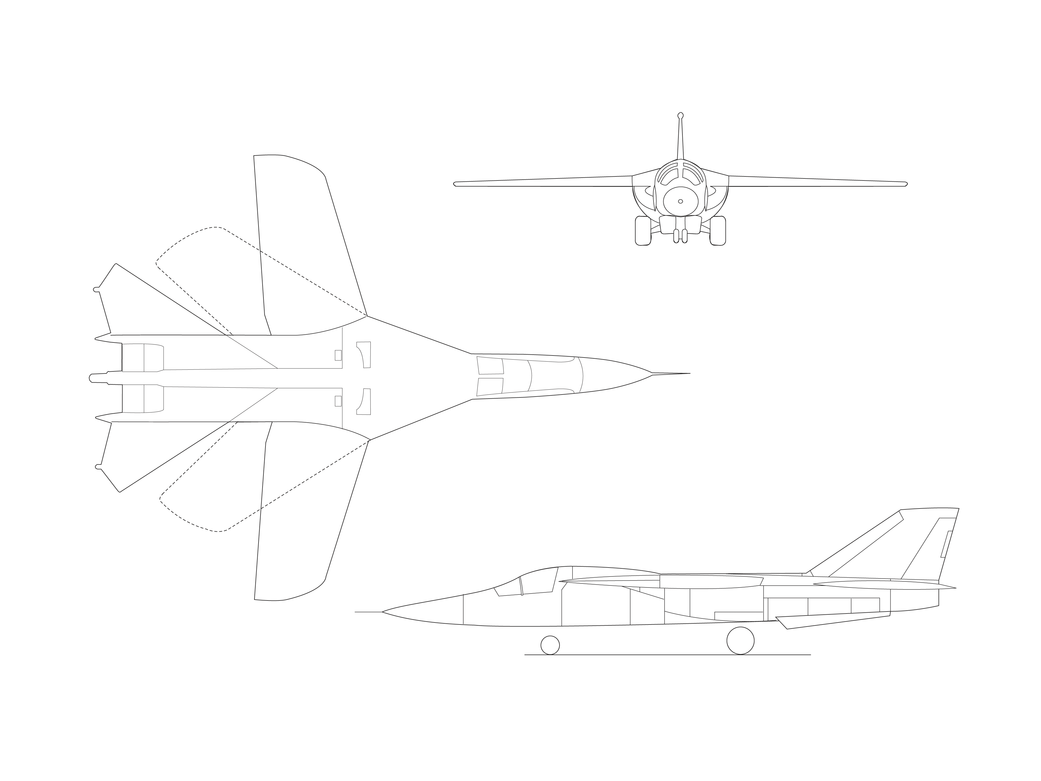EG-0048-01
Over a span of about 23 years from 1967 to about 1990, records indicate around six General Dynamic F-111 Aardvark aircraft at the NASA Dryden Flight Research Center, Edwards, California. During this time span, four areas of significant flight testing stand out. The first tests occurred during the late 1960s when NASA worked on evaluating problems with the early F-111A (#63- 9771 and #63-9777) for the Air Force and Navy. The early 1970s through the late 1980s brought the second and third phases of testing with an on-going effort to improve the F-111A (#63-9778).
The second phase called transonic aircraft technology (TACT/F-111A) added an highly efficient supercritical wing and later the third phase applied advanced wing (Mission Adaptive Wing-MAW) flight control technologies and was called Advanced Fighter Technology Integration (AFTI/F-111A). The fourth effort, utilizing an F-111E (#67-0115), ran from 1973 to 1976, and used an engine with an electronic control system (fly-by-wire) in place of the traditional hydro-mechanical system. This program called the integrated propulsion control system (IPCS) helped validate the Digital Electronic Engine Control (DEEC) concept…Learn more



























